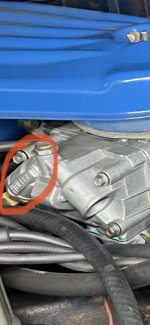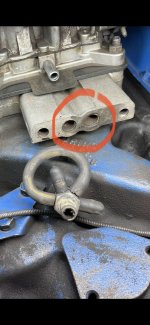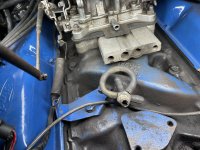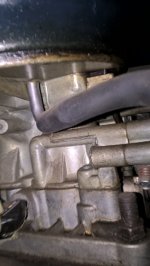I was going by the OP's picture of a factory carburetor in post #7, that you re-posted in yours. Made me think it was still your carburetor we were talking about. Missed the fact that we were talking about two different Broncos here!
Thanks for posting your own pictures, which cleared things up after a bit of discussionations.
Holley traditionally had a 350cfm and a 500cfm carburetor. There may be numbers stamped into the body somewhere that indicate which one it is.
Which is the only real problem usually with jumping into an existing thread. Not that it's not a good thing to add more info and questions to someone else's information, but that people like me (old-timers mental acuity) miss the subtle clues of the questions being asked by different members!
My fault for not paying more attention. Or maybe it was just being on my phone for a couple of them, I missed it.
Sure, that's my excuse. And I'm sticking to it!
So no, you do not have a bowl vent because it was mostly a factory thing and only a very few Holley and Edelbrock carbs ever had them.
And the Edelbrocks are no longer available that way (I've got one, but haven't used it yet due to going EFI on everything and it's brother), not sure about Holley.
And it does not look like your early style charcoal canister has the added port for a bowl vent anyway.
What year is yours again? Certainly '73 or later, correct?
As others have said about the vacuum lines:
1. The big port angled upward from that "vacuum manifold" (commonly referred to as a "vacuum tree" because some different designs actually looked like trees) is for your brake booster.
2. The one sticking out of the base of the carburetor is for your PCV valve.
3. All the others will either remain capped off, or used for something if you ever install any other vacuum accessories. But they were there for things like automatic transmission vacuum modulators, and mostly smog-related items that have obviously been removed.
Regarding the charcoal canister connections:
4. The large paper fiber metal reinforced hose remains on that fitting at the air cleaner housing.
5. The second large matching one remains open to the air. Normally there is a plastic reinforcing ring ('70 to '72) or a cover that we call a "mushroom cap" ('73 to '77) that keeps out debris but allows air in.
6. Small one (is there only one?) on the canister is connected to the gas tank(s) via the condensing tank inside the cabin ('70 to sometime in '76).
Paul
















